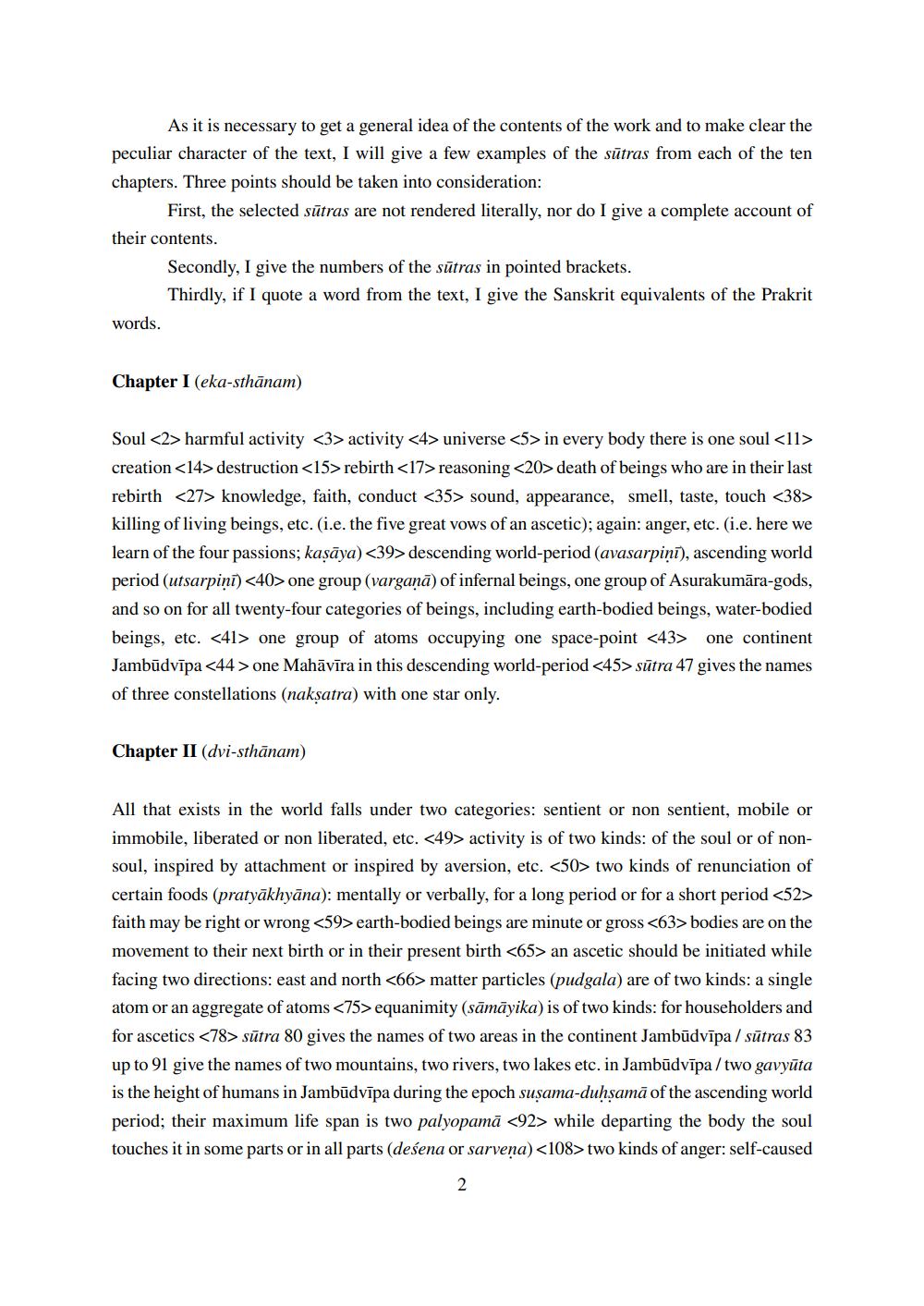________________
As it is necessary to get a general idea of the contents of the work and to make clear the peculiar character of the text, I will give a few examples of the sutras from each of the ten chapters. Three points should be taken into consideration:
First, the selected sūtras are not rendered literally, nor do I give a complete account of their contents.
words.
Secondly, I give the numbers of the sutras in pointed brackets.
Thirdly, if I quote a word from the text, I give the Sanskrit equivalents of the Prakrit
Chapter I (eka-sthanam)
Soul <2> harmful activity <3> activity <4> universe <5> in every body there is one soul <11> creation <14> destruction <15> rebirth <17> reasoning <20> death of beings who are in their last rebirth <27> knowledge, faith, conduct <35> sound, appearance, smell, taste, touch <38> killing of living beings, etc. (i.e. the five great vows of an ascetic); again: anger, etc. (i.e. here we learn of the four passions; kaṣāya) <39> descending world-period (avasarpiņi), ascending world period (utsarpiņi) <40> one group (vargaṇā) of infernal beings, one group of Asurakumara-gods, and so on for all twenty-four categories of beings, including earth-bodied beings, water-bodied beings, etc. <41> one group of atoms occupying one space-point <43> one continent Jambudvipa <44>one Mahavira in this descending world-period <45> sutra 47 gives the names of three constellations (nakṣatra) with one star only.
Chapter II (dvi-sthänam)
All that exists in the world falls under two categories: sentient or non sentient, mobile or immobile, liberated or non liberated, etc. <49> activity is of two kinds: of the soul or of nonsoul, inspired by attachment or inspired by aversion, etc. <50> two kinds of renunciation of certain foods (pratyākhyāna): mentally or verbally, for a long period or for a short period <52> faith may be right or wrong <59> earth-bodied beings are minute or gross <63> bodies are on the movement to their next birth or in their present birth <65> an ascetic should be initiated while facing two directions: east and north <66> matter particles (pudgala) are of two kinds: a single atom or an aggregate of atoms <75> equanimity (sāmāyika) is of two kinds: for householders and for ascetics <78> sutra 80 gives the names of two areas in the continent Jambudvipa / sūtras 83 up to 91 give the names of two mountains, two rivers, two lakes etc. in Jambudvipa / two gavyūta is the height of humans in Jambudvipa during the epoch suṣama-duḥṣama of the ascending world period; their maximum life span is two palyopamā <92> while departing the body the soul touches it in some parts or in all parts (desena or sarvena) <108>two kinds of anger: self-caused
2




